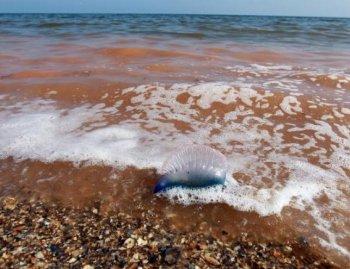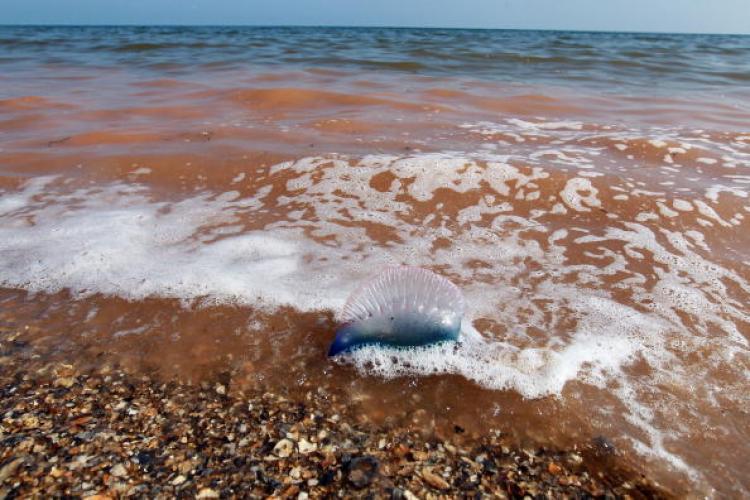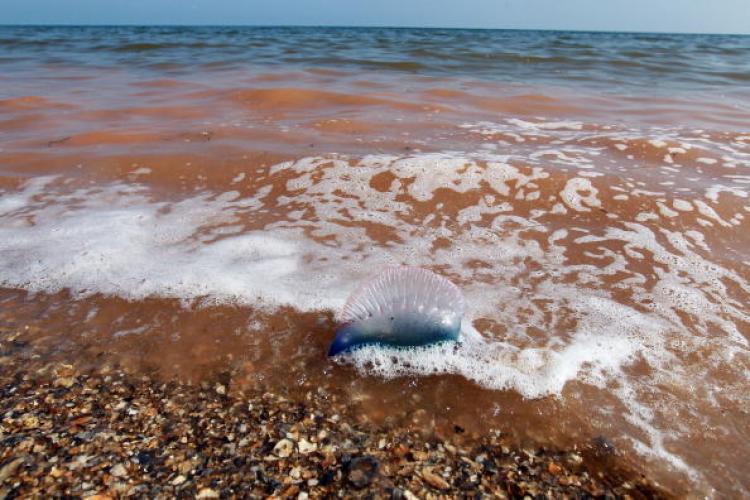Progress continued on the Deepwater Horizon oil spill clean up as the U.S. Coast Guard performed more controlled burnings and flights on Thursday, May 6. Yesterday a response team of around 6,700 carried out five controlled burnings and managed 18 flight operations. The flights dropped dispersant chemicals to break up the spill.
Wednesday, the response team skimmed 14,000 gallons of oil polluted water, but 45,000 barrels of oily water mix still remained near the Louisiana coast, said Brandon Blackwell, an officer with the Coast Guard.
Louisiana Wildlife and Fisheries Enforcement agents discovered two dead, oil-covered gannets, large birds commonly found near Louisiana’s coast, in the Grand Gosier Area on Thursday. The men sent the birds to U.S. Fish and Wildlife Service personnel to determine the cause of their deaths. Louisiana government officials suspect the Deepwater Horizon oil spill was responsible.
Weak wind currents blowing southeast allowed the oil spill cleanup to progress faster than it had a few days ago. National Oceanic and Atmospheric Administration, (NOAA), updated satellite imagery of the spill area and predicted the currents should be roughly the same for May 6 and May 7.
Last week an AP reporter saw an oily substance washed up at the mouth of the Mississippi River. On May 6, another AP reporter spotted a pinkish oily substance on the shore of New Harbor Island, just off the coast of Louisiana.
To aid with the cleanup, a specially designed steel containment canopy will be lowered onto the Deepwater Horizon site on Thursday. The domed box is meant to contain the leaking oil and allow it to be pumped into a ship. British Petroleum (BP), said in a news release that the vessel carrying the containment box arrived Thursday afternoon, but its effectiveness and functionality will be unknown until after it us used.
Lowering the concrete box will not be enough, so a relief well is being drilled in area where the pipe line spews the most oil. Even though one of the three leaks was successfully capped, the amount of oil leaking into the water did not decrease.
Oil has been seeping into the waters at a rate of 210,000 gallons per day since April 20, reported BP. In the original explosion, 11 people were killed.
Efforts grow as the contaminated water threatens wetlands, birds and fish in the area. “They’re gonna try everything they can. If it don’t work, they'll try something else,” said Captain Demi Shaffer to the AP, referring to the containment boxes. Shaffer is captain of the Joe Griffin, the ship which carried the boxes to the site.
Wednesday, the response team skimmed 14,000 gallons of oil polluted water, but 45,000 barrels of oily water mix still remained near the Louisiana coast, said Brandon Blackwell, an officer with the Coast Guard.
Louisiana Wildlife and Fisheries Enforcement agents discovered two dead, oil-covered gannets, large birds commonly found near Louisiana’s coast, in the Grand Gosier Area on Thursday. The men sent the birds to U.S. Fish and Wildlife Service personnel to determine the cause of their deaths. Louisiana government officials suspect the Deepwater Horizon oil spill was responsible.
Weak wind currents blowing southeast allowed the oil spill cleanup to progress faster than it had a few days ago. National Oceanic and Atmospheric Administration, (NOAA), updated satellite imagery of the spill area and predicted the currents should be roughly the same for May 6 and May 7.
Last week an AP reporter saw an oily substance washed up at the mouth of the Mississippi River. On May 6, another AP reporter spotted a pinkish oily substance on the shore of New Harbor Island, just off the coast of Louisiana.
To aid with the cleanup, a specially designed steel containment canopy will be lowered onto the Deepwater Horizon site on Thursday. The domed box is meant to contain the leaking oil and allow it to be pumped into a ship. British Petroleum (BP), said in a news release that the vessel carrying the containment box arrived Thursday afternoon, but its effectiveness and functionality will be unknown until after it us used.
Lowering the concrete box will not be enough, so a relief well is being drilled in area where the pipe line spews the most oil. Even though one of the three leaks was successfully capped, the amount of oil leaking into the water did not decrease.
Oil has been seeping into the waters at a rate of 210,000 gallons per day since April 20, reported BP. In the original explosion, 11 people were killed.
Efforts grow as the contaminated water threatens wetlands, birds and fish in the area. “They’re gonna try everything they can. If it don’t work, they'll try something else,” said Captain Demi Shaffer to the AP, referring to the containment boxes. Shaffer is captain of the Joe Griffin, the ship which carried the boxes to the site.







